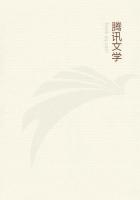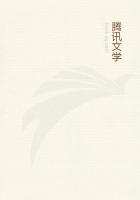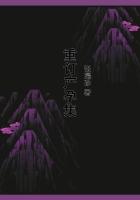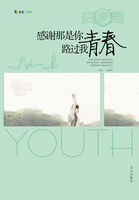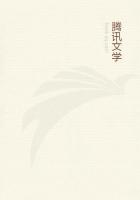first, that white colour on a black surface or seen through a black medium gives red; second, that sight when strained to a distance becomes weaker and less; third, that black is in a sort the negation of sight: an object is black because sight fails; so everything at a distance looks blacker, because sight does not reach it. The theory of these matters belongs to the account of the senses, which are the proper subjects of such an inquiry; we need only state about them what is necessary for us. At all events, that is the reason why distant objects and objects seen in a mirror look darker and smaller and smoother, why the reflection of clouds in water is darker than the clouds themselves. This latter is clearly the case: the reflection diminishes the sight that reaches them. It makes no difference whether the change is in the object seen or. in the sight, the result being in either case the same. The following fact further is worth noticing.
When there is a cloud near the sun and we look at it does not look coloured at all but white, but when we look at the same cloud in water it shows a trace of rainbow colouring. Clearly, then, when sight is reflected it is weakened and, as it makes dark look darker, so it makes white look less white, changing it and bringing it nearer to black. When the sight is relatively strong the change is to red; the next stage is green, and a further degree of weakness gives violet. No further change is visible, but three completes the series of colours (as we find three does in most other things), and the change into the rest is imperceptible to sense. Hence also the rainbow appears with three colours; this is true of each of the two, but in a contrary way. The outer band of the primary rainbow is red: for the largest band reflects most sight to the sun, and the outer band is largest.
The middle band and the third go on the same principle. So if the principles we laid down about the appearance of colours are true the rainbow necessarily has three colours, and these three and no others. The appearance of yellow is due to contrast, for the red is whitened by its juxtaposition with green. We can see this from the fact that the rainbow is purest when the cloud is blackest; and then the red shows most yellow. (Yellow in the rainbow comes between red and green.) So the whole of the red shows white by contrast with the blackness of the cloud around: for it is white compared to the cloud and the green. Again, when the rainbow is fading away and the red is dissolving, the white cloud is brought into contact with the green and becomes yellow. But the moon rainbow affords the best instance of this colour contrast. It looks quite white: this is because it appears on the dark cloud and at night. So, just as fire is intensified by added fire, black beside black makes that which is in some degree white look quite white. Bright dyes too show the effect of contrast.
In woven and embroidered stuffs the appearance of colours is profoundly affected by their juxtaposition with one another (purple, for instance, appears different on white and on black wool), and also by differences of illumination. Thus embroiderers say that they often make mistakes in their colours when they work by lamplight, and use the wrong ones.
We have now shown why the rainbow has three colours and that these are its only colours. The same cause explains the double rainbow and the faintness of the colours in the outer one and their inverted order. When sight is strained to a great distance the appearance of the distant object is affected in a certain way: and the same thing holds good here. So the reflection from the outer rainbow is weaker because it takes place from a greater distance and less of it reaches the sun, and so the colours seen are fainter. Their order is reversed because more reflection reaches the sun from the smaller, inner band. For that reflection is nearer to our sight which is reflected from the band which is nearest to the primary rainbow. Now the smallest band in the outer rainbow is that which is nearest, and so it will be red; and the second and the third will follow the same principle. Let B be the outer rainbow, A the inner one; let R stand for the red colour, G for green, V for violet; yellow appears at the point Y. Three rainbows or more are not found because even the second is fainter, so that the third reflection can have no strength whatever and cannot reach the sun at all. (See diagram.)5
The rainbow can never be a circle nor a segment of a circle greater than a semicircle. The consideration of the diagram will prove this and the other properties of the rainbow. (See diagram.)Let A be a hemisphere resting on the circle of the horizon, let its centre be K and let H be another point appearing on the horizon.
Then, if the lines that fall in a cone from K have HK as their axis, and, K and M being joined, the lines KM are reflected from the hemisphere to H over the greater angle, the lines from K will fall on the circumference of a circle. If the reflection takes place when the luminous body is rising or setting the segment of the circle above the earth which is cut off by the horizon will be a semi-circle; if the luminous body is above the horizon it will always be less than a semicircle, and it will be smallest when the luminous body culminates.

